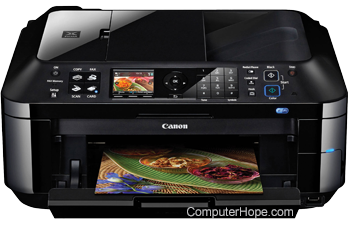
Do you have a printer? Is finding the right ink for it driving you crazy?
Printer ink plays a critical role in achieving high-quality prints. With various types and formulations available, selecting the correct printer ink can be a daunting task. This ink shopping guide will provide you with essential factors to consider when choosing printer ink that meets your specific requirements, ensuring optimal print results every time.
So, if you aren’t sure where to begin, read on. This below guide outlines what you need to know about printer inks and how to choose the right ones.
Know Your Printer
Start by understanding the type of printer you own. Inkjet and laser printers use different ink technologies. Inkjet printers employ liquid ink, while laser printers use powdered toner. Each printer type requires specific ink formulations designed for optimal performance. Check your printer’s manual or manufacturer’s website to determine the recommended ink type and cartridge compatibility. If you have a Carrot Ink discount code, be sure to use it when buying liquid inks, as they can be pricey!
Consider Print Quality
Print quality is a crucial factor when selecting printer ink. If you prioritize vibrant colors and sharp details, choose ink cartridges that offer high color gamut and resolution capabilities. Look for ink formulations that deliver consistent results, resist fading, and produce prints suitable for your intended purpose, whether it’s professional documents, photographs, or artwork.
Compatibility
Ensure the ink cartridges you choose are compatible with your printer model. Manufacturers often provide a list of compatible ink cartridges, and using non-compatible cartridges may result in poor print quality or even damage your printer. Consider both the brand and model of your printer when selecting ink cartridges to ensure compatibility.
Original Equipment Manufacturer (OEM) vs. Third-Party Cartridges
You have the option to choose between OEM and third-party ink cartridges. OEM cartridges are produced by the printer manufacturer and are specifically designed for their printers. They often guarantee high-quality prints but can be more expensive. Third-party cartridges, made by independent manufacturers, offer a cost-effective alternative. However, quality and reliability may vary. Research and read reviews to determine the best third-party cartridge options available for your printer.
Ink Formulation
Ink formulations differ based on their intended use. Standard dye-based inks are suitable for general printing needs, providing vibrant colors but with slightly less resistance to fading. Pigment-based inks offer superior longevity and are ideal for archival prints or documents that require durability. Additionally, specialty inks, such as sublimation inks for heat transfer printing or UV-resistant inks for outdoor use, cater to specific applications. Consider the purpose of your prints to choose the appropriate ink formulation.
Page Yield and Cost-Effectiveness
Page yield refers to the number of pages an ink cartridge can produce before it needs replacement. Consider the cost per page when comparing ink cartridges. High-capacity cartridges may have a higher upfront cost but offer a lower price per page in the long run. Evaluate your printing volume and requirements to strike a balance between quality and cost-effectiveness.
Shelf Life and Storage
Printer ink has a limited shelf life, and improper storage can shorten its longevity. Always check the date on the ink cartridges before purchasing, and consider the anticipated usage rate to avoid wastage. Store cartridges in a cool, dry place, away from direct sunlight and extreme temperatures, to maintain their quality for more extended periods.
User Reviews and Recommendations
Research user reviews and seeks recommendations from trusted sources, such as online forums or friends with similar printing needs. User experiences can provide valuable insights into the performance, longevity, and reliability of different ink cartridges. Consider multiple perspectives before making your final decision.
Warranty and Customer Support
Be sure to check the warranty and customer support offered by the ink cartridge manufacturer. A reliable warranty and accessible customer support indicate the manufacturer’s confidence in their product. Should any issues arise, prompt assistance and replacements can save you from unnecessary expenses.
The FAQ Section
Of course, when it comes to printers and ink, many people who are not overly tech-savvy may have queries about printer ink, as well as how much is worth spending on ink. So, here is a short FAQ section to help you out when shopping for ink.
How do I choose the correct ink for my printer?
When purchasing printer ink, it is essential to select the correct ink cartridges that are compatible with your specific printer model. To determine the appropriate ink, refer to your printer’s manual or manufacturer’s website for consistent cartridge numbers. It’s crucial to check the color and type of ink as well, whether it’s pigment-based or dye-based, based on your printing needs.
How can I save money on printer ink?
Printer ink can be expensive, but there are several ways to save money on your ink purchases. One option is to consider using compatible or remanufactured ink cartridges instead of original brand cartridges. These alternatives are often more affordable and can provide comparable results. Additionally, printing in draft mode or grayscale, when possible, can help conserve ink. Finally, purchasing ink in bulk or opting for ink subscription services may offer cost savings in the long run.
How long does printer ink last?
The longevity of printer ink can vary based on several factors, including usage patterns, print quality settings, and storage conditions. Generally, ink cartridges have an expiration date printed on the packaging, indicating the estimated shelf life. If the ink is stored unopened and in a cool, dry place, it can last for one to two years. However, once installed in the printer, the ink may dry up or become less effective over time, mainly if the printer is not used regularly.
Why does my printer show low ink levels even though I recently replaced the cartridges?
Many printers use an ink level monitoring system that estimates ink levels based on usage. However, these estimations are not always accurate, and the printer may display low ink levels even if the cartridges are not empty. This is especially common with third-party or refilled cartridges that may not have the same communication protocols as original cartridges. In such cases, it is usually safe to continue printing until the print quality noticeably deteriorates. If there is an issue with your printer that is always showing low ink levels, this will need to be assessed by an expert.
How can I maintain the quality of my printer ink?
To ensure optimal print quality and longevity of your printer ink, it is crucial to follow some maintenance practices. Firstly, avoid leaving your printer turned off for extended periods, as it can lead to ink clogs and drying. Regularly print a test page or perform a cleaning cycle to keep the ink flowing smoothly. Additionally, handle the ink cartridges carefully and avoid touching the printhead or contacts to prevent any damage. Finally, always purchase ink from reliable sources to ensure the authenticity and quality of the product.













